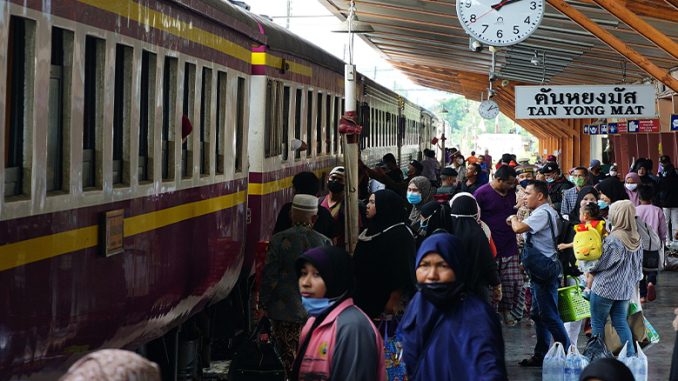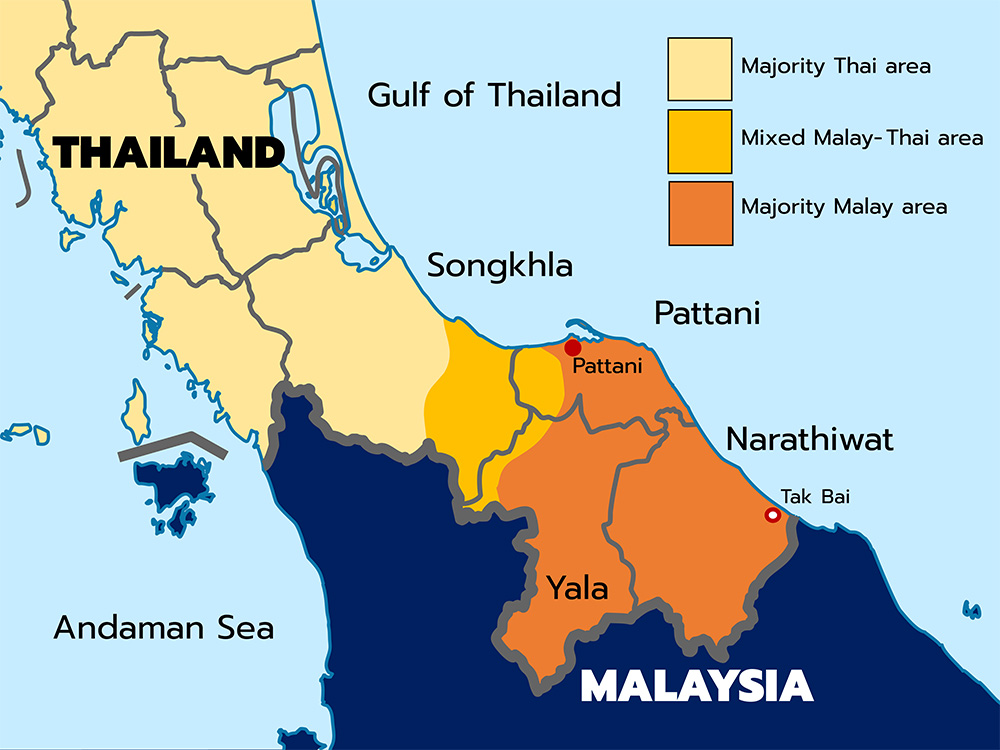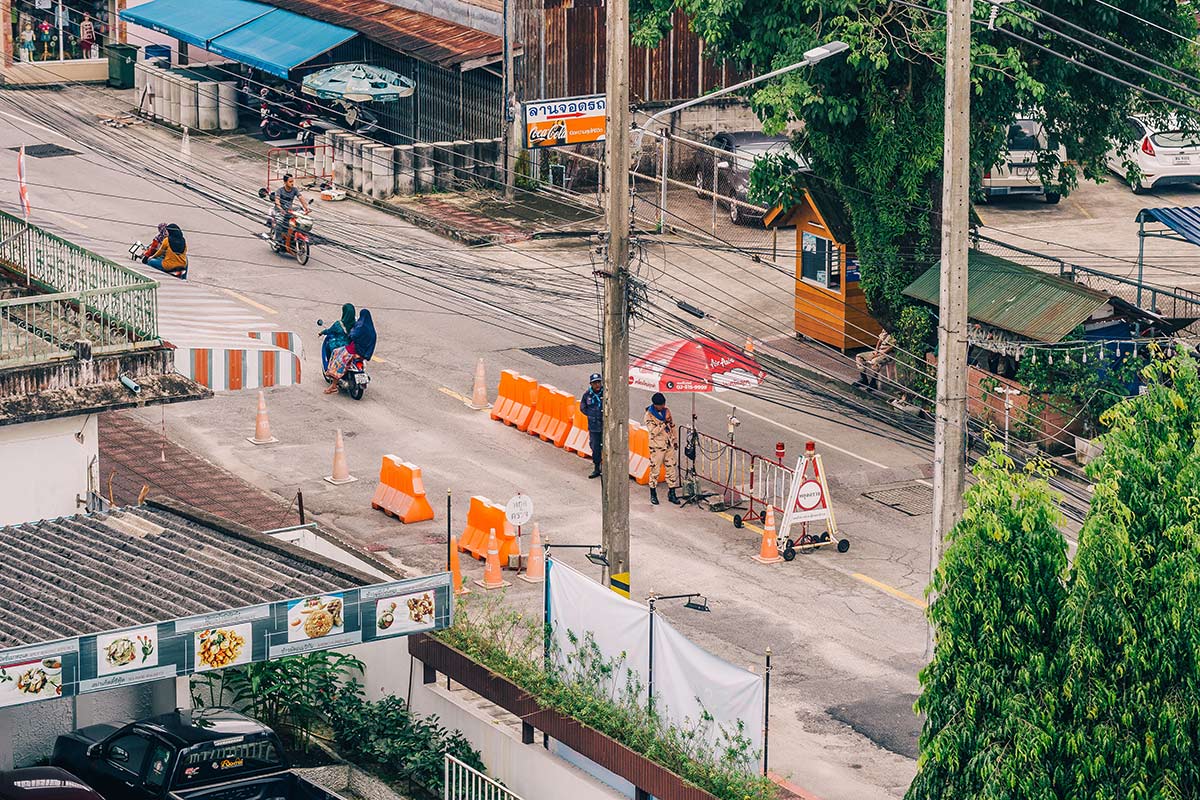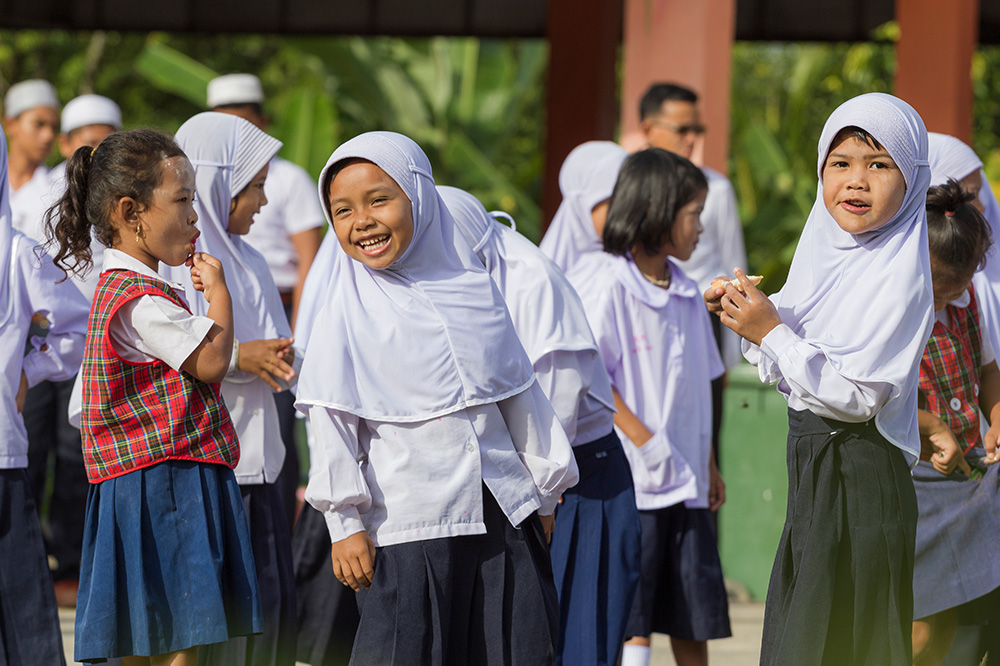
On 11 January 2022, the Thai government and the Barisan Revolusi Nacional (BRN) concluded their first face-to-face meeting in two years since the start of the pandemic. The talks are aimed at settling an ethnopolitical conflict that has taken the lives of more than 7,200 people and injured another 13,500 since 2004 (Deep South Watch, 2021). Although the meetings are long overdue, the likelihood of a breakthrough occurring anytime soon is low. This article draws on the concept of counter-peace to explain this pessimistic outlook and in doing so, identify some of the region’s major blockages to peace.
What is Counter-Peace?
If no theory of revolution is complete without an explanation of counter-revolutions, then no theory of peace is complete without an explanation of the counter-peace. Building on well-founded critiques of the post-Cold War liberal paradigm, the counter-peace refers to the many ways that elites try to preserve order, stability, and the status quo. Their tactics are considered most effective if they constitute more subtle or indirect acts aimed at blocking change. Particularly relevant are the ways elites and their criminal networks capture state institutions and how they subvert and co-opt state formation processes in order to create a more durable counter-peace (Visoka, 2020 p.435).
By exploring how peace efforts can be blocked or undermined, the concept of counter-peace offers an explanation for why liberal peacebuilding interventions have, overall, been unsuccessful. International norms governing interstate relations play a role here; foreign governments are obliged to engage and work with state institutions, even if those institutions have been co-opted by counter-peace elites. This has led to international aid and liberal peacebuilding interventions inadvertently strengthening counter-peace forces (Pogodda and Richmond and Visoka, in publication p.6). In addition, liberal peacebuilding’s failure to give due regard to the influence of power dynamics has led it to overburden civil society with too many responsibilities and unrealistic expectations. This ignores the fact that an often fragmented civil society simply cannot compete with counter-peace alliances, particularly if one acknowledges how global realpolitik conditions international support. The outcome has been the proliferation of frozen or stalemated conflicts (Pogodda and Richmond and Visoka, in publication).

Overview of Conflict Resolution Efforts in the Deep South
Since 2004, the Thai state’s approach to quelling the violence has focused primarily on counterinsurgency and development. The military, especially, opposed a formal peace process out of fear that such a move could elevate the status of insurgents and internationalise the conflict.
This changed with the 2013 public launch of a peace dialogue process by the Yingluck Shinawatra government, a departure from the Thai state’s conventional approach. Kuala Lumpur acted as a facilitator at the Thai government’s request. Even though the BRN participated only at the behest of Malaysia, the process pushed the secretive group to reveal itself publicly and begin communicating with the general public through mainstream and social media.
Following the 2014 military coup, the National Council for Peace and Order (NCPO) continued with peace dialogue although the BRN refused to participate in talks under a military regime. Mara Patani—an umbrella group of mainly Malaysia-based exiled separatists—took its place but was hampered by a severe legitimacy deficit owing to their perceived inability to control the rank and file.
With no tangible progress made under the NCPO, a new phase of peace dialogue began in 2020 after it emerged that discreet backchannel talks with the BRN had been going on for at least a year. The Thai side met BRN representatives in Kuala Lumpur for the first time in January 2020 and international observers were allowed to attend the peace talks in a personal capacity. But the pandemic cut the process short and the next in-person meeting was not held until this January.
International Blockages to Peace
Foreign Aid and the International Peace Architecture
The historical antecedents to the current blockages to peace lie partly in the way foreign aid was disbursed in Thailand over the course of the mid-20th Century onwards. Specifically, foreign aid programmes across Thailand tended to exacerbate local conflict dynamics since they failed to recognise, let alone address, the country’s e horizontal and other inequalities. Burke’s thesis on foreign aid and peripheral conflict (2012) describes how foreign aid funded negatively-perceived national development initiatives because these funds were channelled mainly through Bangkok, whose development approach was intimately tied to its assimilationist nation-building project. (Burke, 2012 p.147). In particular, development and poverty eradication projects have been geared towards fostering loyalty to the monarchy (Chalermsripinyorat, 2020 p.77).
Since the resumption of violence in 2004, key donors of the international peace architecture have largely bypassed the Deep South. Donors that have attempted to address the conflict’s structural roots with small scale funding initiatives have had their efforts blocked by the Thai state. In the Deep South, donors have rarely been allowed to approach sensitive issues seen as relating to national identity or sovereignty (Burke, 2012 p.148). In 2019, the Thai government refused to accept US$1.8 million from the UN, which would have been distributed to different UN agencies to work on peacebuilding in Southern Thailand (personal communication with UN official, September 2021). In short, internationally-supported peacebuilding measures remain thin on the ground.

International Counter-Peace Architecture
A much discussed topic in policy circles has been the democratic regression occurring in many Southeast Asian countries. The phenomenon affects not only domestic politics but has a spillover effect on other countries in the region. Yet, in this context, it might be more pertinent to ask whether it is indicative of an emerging international counter-peace architecture? The Association of Southeast Asian Nations (ASEAN), arguably, displays some core elements of the counter-peace. The body’s doctrine of noninterference, known as the “ASEAN way”, is frequently said to undermine regional human rights promotion and protection. For example, ASEAN ministers have stuck rigidly to the ASEAN way and avoided releasing any official statements on Thailand’s southern conflict (Rupprecht, 2014). Moreover, despite the 2009 inauguration of the ASEAN Intergovernmental Commission on Human Rights (AICHR) and the 2012 promulgation of the ASEAN Human Rights Declaration, there has been a notable “mismatch between these declaratory goals and realities on the ground” (Langlois, 2021). The body’s adoption of the rhetoric of human rights could be viewed as an elite measure aimed at buffering themselves against domestic and international pressure. In other words, ASEAN’s establishment of human rights commissions and declarations may simply be a “watered-down” political response to regional civil society’s vociferous human rights advocacy.
Another element of the international counter-peace architecture might be termed authoritarian capacity building, a process whereby governments share, learn, and exchange best practices with a view to countering emancipatory agents in society. For example, signs of Thailand’s “creeping digital authoritarianism” have led some observers to ask whether the Chinese have directly supported Thailand’s attempts to increase its control of the Deep South through digital means (McDermott, 2021). Since the 2014 coup, Thailand has drawn closer to China in all areas and has complied with Beijing’s requests to extradite Chinese dissidents (Ganjanakhundee, 2020). Since Myanmar’s coup and subsequent crackdown on its citizens, there have been reports that coup leader Min Aung Hlaing has sought advice from Gen. Prayut on how to build a democratic facade (Samet, 2021). Although establishing the veracity of such communications poses a considerable challenge, it is possible to see a pattern of similar tactics employed across the region by several authoritarian governments.
National Blockages to Peace
Competitive Authoritarianism
Within Thailand, the entrenchment of competitive authoritarianism (Levitsky and Way, 2010) represents a victory for the country’s traditionalist network of monarchised-military elites (Chambers & Waitoolkiat 2016), who have successfully manipulated the country’s democratic institutions to handicap opponents and cement their power. Following the 2014 coup, significant changes were made to the constitutional and legal framework, culminating in 2017 with the enactment of Thailand’s 20th Constitution. Two years later, an election was held in an environment that enabled pro-regime institutions to exploit legal mechanisms to undercut the opposition and ensure that Gen. Prayut could continue as prime minister for another term. The ideological impetus of this network of elites is the maintenance of Thailand’s traditional order with the king at the helm.
The 1932 coup that led to Thailand’s transition from absolute to constitutional monarchy spawned a “protracted struggle between the old order and the new” (Baker & Pongphaichit, p.119), which drives a repetitive cycle of socio-political instability, coups and new constitutions. This cycle is testament to the country’s failure to create a resilient national social contract and efforts to upend the existing conservative social hierarchy and establish a new social contract have proved incredibly challenging. This unwillingness to countenance an alternative and broader conception of the Thai polity acts as a significant blockage to southern peace, which requires a fundamental transformation of the relationship between the centre and the periphery.
Discourse Manipulation
Recalling the fact that counter-peace is said to be most effective when it represents more water-downed alternatives to peace (Pogodda & Richmond & Visoka, unpublished p.5), the manipulation of discourses is worth mentioning as a primary counter-peace manoeuvre. Discourse, as a social practice, is multifaceted; just as it can promote and uphold certain ideologies, it can also be an effective form of dissemblance. Thailand’s counter-peace elites are particularly adept at this double-speak. Comparison of the Thai government’s information materials on the southern dialogue process reveal subtle differences between the English and Thai language versions. The former has evolved over the years such that it now incorporates progressive terms and concepts related to conflict transformation, which are more amenable to international proponents of the liberal peace. Since 2016, when ISOC held its first press conference at the western-media oriented Foreign Correspondents Club of Thailand (FCCT), terms such as “inclusivity”, “safety zone”, and “common space” began cropping up. And although the meaning of these terms may appear to be fixed, they are open to interpretation. Constructive ambiguity is a valuable tool in the counter-peace arsenal and need not be confined solely to the realm of negotiations. In a 2020 press release, it was affirmed that “a sustainable dialogue process requires participation and support from all sectors.” Yet, the peace dialogue process remains a steadfastly un-inclusive process and state-initiated “consultations” continue to be roundly criticised by civil society for the lack of any actual consultation. By contrast, Thai language press materials adopt a more conservative tone that downplays the status of their interlocutors, for example by habitually using the euphemistic nomenclature of “those who hold different views from the state”, by referring to the violence as “the southern problem” and by emphasising conflict containment or management over resolution. One wonders whether donor-funded exchange trips for state officials to learn about peace processes in other contexts have simply made them more adept at employing certain discourses in certain contexts and to certain audiences. Thus, those western countries that may take an interest in the southern conflict and enquire as to the current situation, possibly at the behest of international human rights NGOs, can be engaged with and placated through the mutual intelligibility of a common discourse.

Grassroots Blockages to Peace
Authoritarian Civil Society
Thailand’s elites are supported by a wider grassroots counter-peace movement, dubbed by Sombatpoonsiri (2021) as authoritarian civil society (ACS). She documents the rise of ACS groups since the 2019 election and notes how their actions have overlapped with and complemented state measures to silence dissidents. The practice of Strategic Lawsuits against Public Participation (SLAPP) has been combined with digital surveillance to stifle critics through multiple legal charges using laws against lèse–majesté, computer crimes, sedition, and defamation. One example demonstrates the symbiotic relationship between top-down and bottom-up forms of counter-peace: an ACS group demanded the Election Commission (EC) dissolve all seven opposition parties for violating a constitutional provision by participating in a highly politically-charged public forum. Although the EC did not take up the complaint, the military’s Internal Security Operations Command (ISOC) lodged a sedition charge against 12 opposition party leaders, academics and activists. The offending topic in the forum had been a discussion on resolving the southern conflict that made reference to amending Section 1 of the Constitution that states that “Thailand is one and indivisible kingdom”. The activism of what Sombatpoonsiri refers to as “organic” ACS groups reflects the country’s ideological polarisation. The ACS’s anti-democratic practices contribute to the expansion of a counter-peace architecture that seeks to eliminate emancipatory agency with a view to preserving their preferred political order. So, we see how conservative nationalist discourses bridge class divides joining counter-peace elites and their mass base.
Fragmented Civil Society
By contrast, non-authoritarian civil society struggles with elite and grassroots nationalism as represented by the monarchised-military elite and the ACS respectively. In addition to the heavy restrictions on freedom of expression, the Thai state has sought to control non-authoritarian civil society through the enactment of a law on NGO registration that would negatively impact those joining together to advocate for human rights. Civil society in the Deep South is already weakened by a lack of resources arising from the state’s restrictions on international funding and in 2018, the allocation of THB 50 million (US$1.49 million) of state funds to support local CSOs sparked a rift that further factionalised civil society. Those who accepted government funding were seen as state lackeys and were discredited. Some organisations even split over the funding disagreement. But, just as liberal peacebuilding has overburdened civil society with unrealistic expectations as to what it can achieve, so some segments of local civil society have naively overestimated the extent to which the international peace architecture is able or willing to assist them in their goal of realising a positive peace for the region.
Conclusion
This article provides a preliminary analysis of the counter-peace forces undermining efforts to resolve the southern conflict. To understand how such forces may add up to an overall counter-peace architecture, it is helpful to take a systemic view of the conflict based on broad parameters that extend from the international down to the grassroots. A benefit of the systemic perspective is that it can capture the self-reproducing character – in essence, the intractability – of long-standing conflicts due to its focus on the interaction and interdependence of the variables and linkages between them (Ropers, p.30).
Using this systemic lens, this article identified some notable counter-peace actors and explored their engagement and interactions with civil society groups and the international donor community. It examined how institutional changes made in Thailand after the 2014 coup have entrenched elite power and reduced the possibilities for altering the status quo. Also discussed were the ideological underpinnings connecting these various elements. In addition, the article highlighted the manipulation of liberal discourses in the service of the counter-peace. All these blockages are, ultimately, related to Thailand’s ongoing struggle to forge a resilient national social contract. While Thailand’s counter-peace elites remain unwilling to countenance any alternative vision of the country, it is unlikely that there will be progress towards a southern peace in the foreseeable future.
Emma Potchapornkul
Emma Potchapornkul is a freelance researcher who has followed and worked on the southern Thai conflict for many years.
Banner photo: Amnat Phuthamrong, Shutterstock
Emma Potchapornkul—Kyoto Review of Southeast Asia, Issue 33, Trendsetters, October 2022
Reference
Baker, Chris & Phongpaichit, Pasut (2014) A History of Thailand. 3rd Edition. Cambridge: Cambridge University Press. doi:10.1017/CBO9781139656993
Björkdahl, Annika & Höglund, Kristine (2013) Precarious peacebuilding: friction in global–local encounters, Peacebuilding, 1:3, 289-299, DOI: 10.1080/21647259.2013.813170
Burke, Adam (2012) Foreign aid and peripheral conflict: a case study of the far south of Thailand. PhD Thesis. SOAS, University of London http://eprints.soas.ac.uk/15635
Chalermsripinyorat, Rungrawee (2020) Dialogue without negotiation: illiberal peace-building in Southern Thailand, Conflict, Security & Development, 20:1, 71-95, DOI: 10.1080/14678802.2019.1705069
Chamber, Paul & Waitoolkiat, Napisa (2016) The Resilience of Monarchised Military in Thailand, Journal of Contemporary Asia, 46:3, 425-444, DOI: 10.1080/00472336.2016.1161060
Deep South Watch (2021): Deep South Incident Database. Available at: https://deepsouthwatch.org/ [accessed 2 October 2021]
Ganjanakhundee, Supalak (March 2020): Thailand’s ‘Complex Engagement’ Approach in Foreign Policy: A Balancing Act. The ISEAS–Yusof Ishak Institute. Available at: https://www.iseas.edu.sg/wp-content/uploads/2020/02/ISEAS_Perspective_2020_23.pdf [accessed 2 October 2021]
Haberkorn, Tyrell (2018): In Plain Sight: Impunity and Human Rights in Thailand. Wisconsin, Madison: University of Wisconsin Press.
Langlois, Anthony J. (2021) Human rights in Southeast Asia: ASEAN’s rights regime after its first decade, Journal of Human Rights, 20:2, 151-157, DOI: 10.1080/14754835.2020.1843144
McDermott, Gerrard (February 2021): Thailand’s Creeping Digital Authoritarianism. The Diplomat. Available at: https://thediplomat.com/2021/02/thailands-creeping-digital-authoritarianism/ [accessed 2 October 2021]
Levitsky, S. and Way, L. A. (2010): Competitive Authoritarianism: Hybrid Regimes after the Cold War. Cambridge: Cambridge University Press (Problems of International Politics). doi: 10.1017/CBO9780511781353.
Pogodda, Sandra & Richmond, Oliver & Visoka, Gezim (unpublished): “Counter-peace: From Isolated Blockages in Peace Processes to Systemic Patterns”
Ropers, Norbert (2008) Systemic Conflict Transformation: Reflections on the Conflict and Peace Process in Sri Lanka in (ed.) A Systemic Approach to Conflict Transformation Exploring Strengths and Weaknesses No. 6 Berghof Handbook Dialogue Series. Berlin. Berghof Foundation pp.12-42
Rupprecht, Kathrin (2014). Separatist conflicts in the ASEAN region: comparing Southern Thailand and Mindanao. ASEAS-Austrian Journal of South-East Asian Studies, 7(121-40. https://doi.org/10.14764/10.ASEAS-2014.1-3
Samet, Oren (February 2021): The Myanmar Public Fights Not to End Up Like Thailand. The Diplomat. Available at: https://thediplomat.com/2021/02/the-myanmar-public-fights-not-to-end-up-like-thailand/ [accessed 2 October 2021]
Sombatpoonsiri, Janjira (2020) The dark side of civil society? How Thailand’s civic networks foster autocracy. Melbourne Asia Review. Available at: https://melbourneasiareview.edu.au/the-dark-side-of-civil-society-how-thailands-civic-networks-foster-autocracy/ [accessed 5 October 2021]
Smith, Claire Q.; Waldorf, Lars; Venugopal, Rajesh; & McCarthy, Gerard (2020) Illiberal peace-building in Asia: a comparative overview, Conflict, Security & Development, 20:1, 1-14, DOI: 10.1080/14678802.2019.1705066
Visoka, Gezim (2020) Everyday peace capture: Nationalism and the dynamics of peace after violent conflict. Nations and Nationalism, 26(2), 431–446. doi:10.1111/nana.12591
